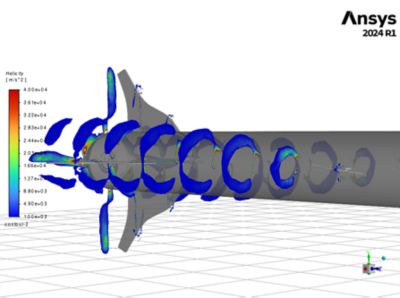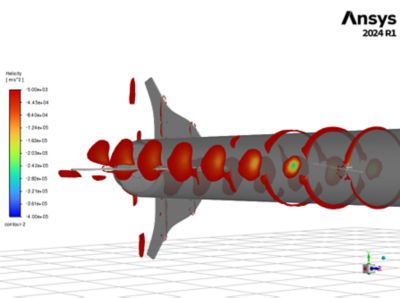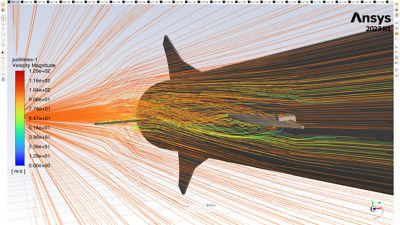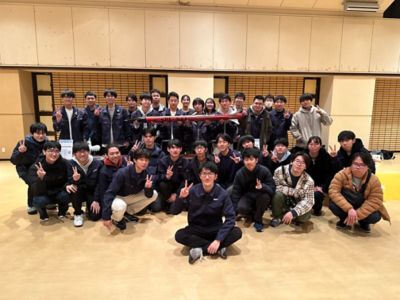Case Study
-
United States -
United Kingdom -
India -
France -
Deutschland -
Italia -
日本 -
대한민국 -
中国 -
台灣
-
Ansys stellt Studierenden auf dem Weg zum Erfolg die Simulationssoftware kostenlos zur Verfügung.
-
Ansys stellt Studierenden auf dem Weg zum Erfolg die Simulationssoftware kostenlos zur Verfügung.
-
Ansys stellt Studierenden auf dem Weg zum Erfolg die Simulationssoftware kostenlos zur Verfügung.
-
Kontakt -
Karriere -
Studierende und Akademiker*innen -
Für die Vereinigten Staaten und Kanada
+1 844,462 6797
“Ansys Fluent® software, with its simple GUI and powerful visualization capabilities, is a guidepost in our aerodynamic design. For our team, it was challenging to perform the wind tunnel testing of a rocket flying at 400 km/s. However, using Ansys Fluent simulation software to visually understand the pressure distribution and interference with the airflow allowed us to select an appropriate design without hesitation.”
— Haruki Iwata, Rocket Group PM, Nagoya University, NAFT
When designing a rocket, one of the key considerations that researchers face is accurately predicting its drop location. Getting this correct is imperative to ensuring safety, preventing potential damage, and avoiding the loss of the rocket itself — which harms data recovery rates. Solving this problem is a top priority for Nagoya University Aerospace and Flight Technologies (NAFT), a team at Nagoya University in Japan that uses their unique free-form fin rocket designs to participate in joint launch experiments hosted by hybrid rocket organizations.
Challenges
NAFT had to overcome three key challenges to succeed in their goals. First, the rocket they are developing has dynamic free-form wings, which require complex flow field analysis. Second, they were tasked with minimizing drag in their fin geometries. Third, the team’s analyses required them to study many different conditions depending on the attitude of the aircraft in flight.


A contour plot created by Ansys Fluent software that shows helicity and enables researchers to see where vortices are and how they are generated.
Engineering Solutions
NAFT used Ansys software to obtain aerodynamic parameters during flight and analyze a variety of conditions, including different fin shapes, airspeeds, and attitudes (i.e., the pitch or roll angle.) Simulation, and the abundant visualization features provided by Ansys software, enabled the team to:
- Use pressure contour plots and flow velocity vectors to quickly and accurately understand the flow field and changes in aerodynamic characteristics due to the design
- Design a smaller free-form fin shape that provides more efficient lift, rather than the trapezoidal fins used by many organizations
- Visualize the vortices generated by a moving wing with the Lambda2 criterion, which is a measure of swirling motion
- Automate the analysis and create a trajectory simulator using the PyFluent package that enables Pythonic access to Fluent software

A pathline diagram showing a single particle’s history of movement. This enables the team to see the movement of air due to the rotation of the moving wing.
Benefits
- Accurately calculating the rocket’s aerodynamic characteristics to help predict the drop position. In the 2023 Noshiro Space Event, the difference between the actual drop position and the position predicted using Fluent simulation was only 120 m, leading to the complete recovery of the vehicle.
- Utilizing Fluent software's visualization capabilities to study the vortex at the blade tip, which has a significant impact on blade performance, to determine a suitable shape for control.
- Automating their analysis in PyFluent after establishing a stable convergent mesh and analysis method setup. This resulted in a reduction of one hour per analysis compared to manual analysis, thereby reducing design time.
- Efficiently analyzing simulations under many different conditions by using the Fluent software’s ability to converge calculations in a short time.

A team photo of NAFT and their hybrid rocket
Los geht's
Wenn Sie mit technischen Herausforderungen konfrontiert sind, ist unser Team für Sie da. Mit unserer langjährigen Erfahrung und unserem Engagement für Innovation laden wir Sie ein, sich an uns zu wenden. Lassen Sie uns zusammenarbeiten, um Ihre technischen Hindernisse in Chancen für Wachstum und Erfolg zu verwandeln. Kontaktieren Sie uns noch heute, um das Gespräch zu beginnen.










